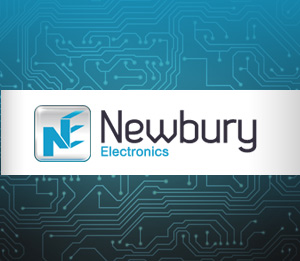
What is a Printed Circuit Board (PCB)?
A PCB is the base board upon which electrical components are fixed and connected.
It is commonly a piece of fibre-glass laminate usually around 1.5 mm thick which is coated on both sides with a thin layer of copper. PCBs are often just 2 layers, but may be single sided or have many layers when they are known as multi-layer circuits.
By means of a photographic process, a circuit design is etched on to the copper surfaces to create copper tracks or traces which carry electricity from point to point. These tracks may be electrically linked from side to side by way of holes drilled into the fibreglass which are plated with copper to make them conductive. These are the plated through holes (PTH). Tracks may be terminated with circular copper pads and drilled holes so that leaded parts may be mounted by passing their copper wires through the holes and soldered. Hence we have the term “through hole” components. The tracks may also be terminated with rectangular copper pads which are designed to accept surface mounted devices (SMD). These parts sit on the surface of the PCB. To solder these SMDs, solder paste (ground up tin, silver & flux with the consistency of butter) is screen printed on to the surface of the pad and the SMD component is placed onto the paste. Heating the PCB, paste and SMD components to around 185 degrees C (reflowing) for a few minutes will fuse the solder paste into solid metal and make a sound electrical joint as well as fixing the component to the PCB.
It is not normal to solder directly to a copper surface. Clean copper is chemically very active and will rapidly tarnish (oxidise) which may prevent a good solder joint. The PCB manufacturer will apply a suitable surface finish to the copper which prevents tarnishing, and provides a flat surface for solder paste printing. Common finishes are immersion silver (IS), hot air solder level (HASL), and immersion gold over electroless nickel (Au/Ni).
PCBs are often green in colour because this is the colour of the solder resist which is coated onto the surface of the PCB. Green was originally selected as the most restful colour on the eye for PCB quality inspectors. Since nearly all inspection is done by machine, this is no longer relevant but the tradition remains and most PCBs today are still coloured green. The purpose of the solder resist is exactly what its name describes. The solder resist stops solder adhering to exposed copper surfaces and restricts the solder to the places where it is required, the solder joints. This is not such a problem if the PCB is hand soldered because solder is only placed at the point where a solder joint is required. A hand solder operative can apply more or less solder as required. If the PCB is machine soldered by a wave soldering machine, then the whole surface of the PCB will be immersed in molten solder for a few seconds, and without the solder resist, all the exposed copper tracks would attract a mass of solder and become shorted together. This is not only a waste of solder, but also very costly to rework. If the PCB is soldered by a reflow oven (for SMD components), it is crucial that each SMD pad is surrounded by solder resist to prevent the carefully measured amount of solder paste on the pad from wicking away along a connected copper track, causing potential “dry” joints and open circuits.
Text printed on the surface of the PCB is called variously the legend, the component ident or the silk screen. It is often printed in white ink because white on green is a good contrast. The purpose of the legend is to identify the location of each component by marking it with its reference (e.g. R1, C1, L1). This reference will match with the Bill of materials (BOM) to identify the part. The legend is also used to mark the correct rotation of the part (e.g. diodes), and identify the PCB with part numbers, issue numbers, and manufacturing date codes and serial numbers.
Modern PCBs have become so complex that they are difficult to inspect both by eye and even by machine. Electronic components are available off the shelf and are standardised. The PCB is the unique part of each design. All are made to order. By the time a PCB has been populated with components its value may have gone up 10 fold or so. A fault in the PCB itself has disproportionate cost implications. Faulty components can be replaced, but a fault with a bare PCB will invariably mean the whole assembly must be scrapped. Consequently, great care is taken to electrically test each PCB before assembly to ensure the PCB is fault free, and a PCB cannot be considered complete until it has passed electrical test.

